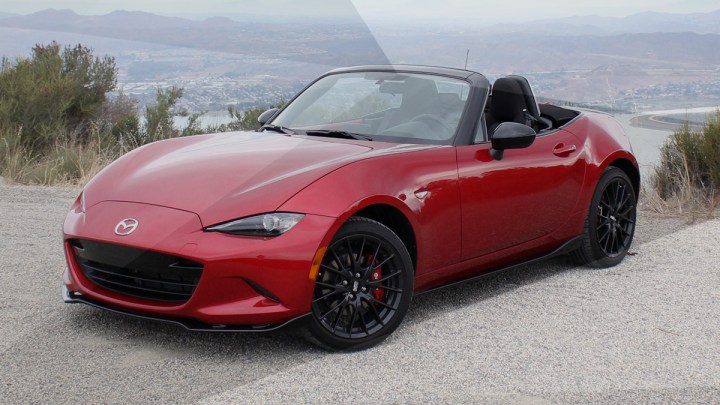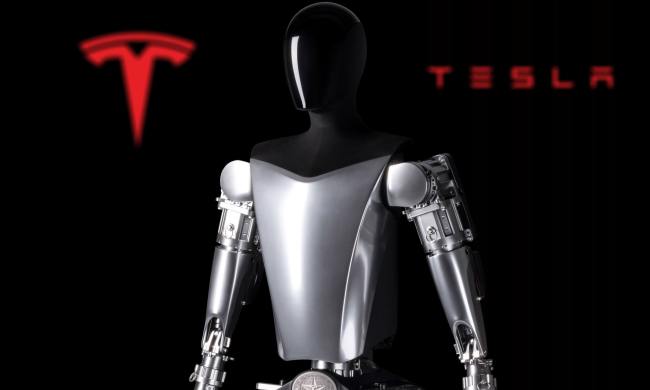
 Winner
Winner
Mazda MX-5 Miata
As products go, cars fall into the unique position between utility and entertainment, so picking the best one overall that we drove in 2016 is quite the task. A car can be useless but fun, or practical yet boring, and both could still be considered “good.” With that in mind, we took a step back to see what cars this year satisfied the basic essence of driving — and the Mazda MX-5 was tough to beat.
Mazda’s plucky roadster evokes extreme emotion on both ends of the spectrum – some love it, some loathe it. But the ones who sing its praises are more often or not the ones who actually spent some time behind the wheel.
With three pedals, a handbrake, a naturally-aspirated engine, and a rear-wheel drive setup, the Miata conforms to a purist’s configuration. The 2.0-liter four-pot under the hood gins up 155 horsepower and 148 pound-feet of torque. For a roadster that weighs roughly 2,300 pounds, that’s plenty of pep to have fun with yet remain manageable; no monstrous horsepower to fear, but no less enjoyable.

Complementing the power punch is its phenomenal steering, braking, and suspension tuning. While enthusiasts might bemoan Mazda’s decision to ditch the hydraulic steering rack for an electrically assisted unit, this is easily one of the best systems available. Not only is turn-in lightning quick, but weight also builds as the g-forces do mid-corner, leading to a natural, balanced feel.
Analog as it may seem, the Mazda MX-5 still meets modern digital needs. Mazda’s Connect infotainment system is one of the best in the industry, with excellent feedback from the selection dial, quick responses from the system, intelligent button redundancies, and clear navigation readout.
Driving purity under $30K and it won’t tear your head off? Sounds like a worthy ride for enthusiasts across the board.


Runner up
Ford F-150
If America had to send one automobile to represent the nation in some car version of The Hunger Games (“Fuel Wars”?), it would send the Ford F-150. It’s been the best selling vehicle in the U.S. for decades, and with good reason: It gets the job done.
What job, you may ask? Just about any of them, actually. The latest iteration sports a high-strength aluminum body on a steel frame that sheds 700 pounds when compared to the previous generation. The current F-150 is much more aggressively styled than before, with lots of creases and chunky shapes to give it a more rugged look that’s much more interesting than the stereotypical boxy truck.
There are brains to go along with the brawn, too. Along with Ford’s Sync 3 infotainment system, the F-150 has available features like a 360-degree camera system and trailer backup assist that makes stowing your haul less of a chore.

Runner up
Mercedes AMG GT S
Auto enthusiasts look at the cars of the past with rose-tinted glasses, longing for today’s to emulate the driving experiences that the classics delivered, warts and all. Mercedes did one better with its AMG GT S, crafting a stellar luxury sport grand tourer that captures a classic car’s essence but is thoroughly a car of the modern age.
The AMG GT S is the automaker’s showpiece, housing a 4.0-liter biturbo V8 that churns up 503 horsepower and 479 pound-feet of torque. Capable of leaping from 0 to 60 in 3.7 seconds, Its stiffness and low center of gravity, combined with the four-wheel double wishbone independent suspension means back road bends feel as supple and smooth as the upholstery you’re sitting on. You could demand little else from a car deemed worthy to be Formula 1’s official pace car.

| Whew! Rough year. Fortunately, we got some amazing tech out of it. Digital Trends’ expert editors picked the most amazing gadgets in their respective categories, then convened as a panel to pick the one that towered above them all. Join us every day between now and Jan. 1 as we recap our favorites, and build up to the big Best of 2016 reveal! |





